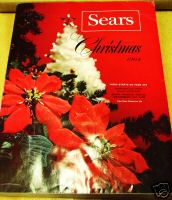Oct 2010
URL: http://www.kingcorn.org/news/timeless/HybridSeln.html
Hybrid Selection: Where’s the Beef?
R.L. (Bob) Nielsen
Agronomy Dept., Purdue Univ.
West Lafayette, IN 47907-2054
Email address: rnielsen
at purdue.edu

![]() can
remember the excitement as a kid when the first Christmas mail-order catalogs
would arrive in the mail from Sears, JC Penney, or Montgomery Ward. I think
some of that excitement lingers today when the seed corn company sales literature
arrives in the mail or when I attend a seed company field day in late August
or early September and listen to the enthusiastic sales pitches. All the hopes
of a record, bin-busting crop for next year are represented in those glossy
multi-color pages that extol the virtues of the latest and greatest hybrids
with every imaginable biotech trait that promise to beat last year’s hybrid
performance by 20 or more bushels per acre.
can
remember the excitement as a kid when the first Christmas mail-order catalogs
would arrive in the mail from Sears, JC Penney, or Montgomery Ward. I think
some of that excitement lingers today when the seed corn company sales literature
arrives in the mail or when I attend a seed company field day in late August
or early September and listen to the enthusiastic sales pitches. All the hopes
of a record, bin-busting crop for next year are represented in those glossy
multi-color pages that extol the virtues of the latest and greatest hybrids
with every imaginable biotech trait that promise to beat last year’s hybrid
performance by 20 or more bushels per acre.
The reality of hybrid selection today is that pressure to place seed orders comes earlier and earlier than ever before. In the “old days”, a guy would wait until January or February to place a seed order. By then, you would have had the time to peruse yield reports from your local land-grant university variety trials or those from the seed companies to identify the hybrids you wanted to purchase. Today, more and more sales pressure occurs before the current year’s variety trials have even been harvested. What’s a guy to do?
Documented consistency in yield performance is still the key to success in selecting hybrids that will perform well in your farming operation. Sales pitches at field days or in farm magazine advertisements should serve only to heighten your awareness of seed companies, their hybrid traits, or specific hybrids and should NOT take the place of meaningful yield data from well-designed hybrid performance trials.
When you are pressured to choose this hybrid or that one because the sales rep assures you it will perform well, don’t hesitate to ask for the performance data that backs up the recommendation. Be like the little old lady in the 1984 Wendy’s™ hamburger TV commercial who demands to know “Where’s the beef?”.
Before you lock next year's hybrid choices in place, take the time to peruse the results of variety trials from the previous year. Except for the newest of hybrids, performance data from the previous year are useful for identifying consistent performers for your operation next year.
How do you identify consistent performers that will likely perform well for you? The secret lies in looking for trials that evaluate hybrids over multiple locations. Multiple testing locations in a single year represent possible weather patterns your farm may encounter in the future. Weather variability influences hybrid performance more than any other variable, because weather interacts with most of the other yield limiting factors. If a hybrid performs consistently well over many sites (i.e., weather patterns), then it will likely perform well on your farm in the future.
(Please, re-read the last paragraph. It is the most important message in this article!)

Do not allow yourself to be distracted by the maze of "flavors" of transgenic (biotech) traits available in the marketplace today. If a sales rep tells you that the latest, greatest "flavor" of a transgenic trait package is the next best thing to sliced bread, demand that he / she show you the evidence that it is CONSISTENTLY superior to other available hybrids. In other words, "Where's the beef?"
Most university hybrid performance programs evaluate hybrids over multiple locations plus multiple years within select maturity zones. Several third-party testing groups also evaluate hybrids over multiple sites. Seed companies obviously evaluate hybrids over hundreds if not thousands of sites each year. Seek out summaries over many locations and avoid concentrating on single site results. Online links to some of these testing programs are listed below.
For multiple site trials where the data have been statistically analyzed, consistent performers are mostly likely found within the upper group of similar-yielding hybrids as determined by a trial’s L.S.D. value. For multiple site trials for which statistical analysis of the data has not been performed, you can identify consistent performers by evaluating hybrid performance relative to the average yield of the trial or relative to the maximum yielding hybrid in a trial.
For example, look for those hybrids that consistently yield 5% above the average yield of trials in which they are entered. If the trial average yield is 180 bpa, look for hybrids yielding 189 bpa or greater (180 x 1.05).
Another way to look for consistent performers is to identify hybrids that consistently yield at least 90% of the maximum yielding hybrid in a trial. If the highest yield in a trial is 225 bpa, look for hybrids that yield 203 bpa or greater (225 x 0.90).
Remember, the key factor in choosing one or more hybrids for your farming operation next year is their documented performance against a range of competitors, not simply specific head-to-head comparisons. Once you have identified a group of otherwise consistent high-yielding hybrids, further filter them for traits important to your situation. For example, corn following corn demands hybrids with superior resistance to important foliar diseases such as gray leaf spot or northern corn leaf blight.
Variety Testing Programs
Purdue Crop Performance Program. 2010. Purdue Univ. Agronomy Dept. [On-Line]. Available at http://www.ag.purdue.edu/agry/PCPP/Pages/default.aspx (URL accessed Oct 2010).
Univ. of Illinois Variety Testing Program. 2010. Univ. of Illinois Crop Sciences Dept. [On-Line]. Available at http://vt.cropsci.illinois.edu (URL accessed Oct 2010).
Kentucky Grain Crops Variety Trials. 2010. Univ. of Kentucky Plant & Soil Sciences Dept. [On-Line]. Available at http://www.uky.edu/Ag/GrainCrops/varietytesting.htm (URL accessed Oct 2010).
Michigan State Variety Trials. 2010. Michigan State Univ. Crop & Soil Sciences Dept. [On-Line]. Available at http://www.css.msu.edu/varietytrials (URL accessed Oct 2010).
Ohio Crop Performance Trials. 2010. Ohio State Univ. Horticulture & Crop Sciences Dept. [On-Line]. Available at http://www.oardc.ohio-state.edu/corntrials (URL accessed Oct 2010).
F.I.R.S.T. 2010. Farmers Independent Research of Seed Technologies. [On-Line]. Available at http://www.firstseedtests.com (URL accessed Oct 2010).
Integrated Ag Services. 2010. IAS Yield Trials. [on-line]. Available at http://www.iasyieldtrials.com (URL accessed Oct 2010).
Soy Capital Ag Services. 2010. (Select “seed testing” from sidebar menu). [On-Line]. Available at http://www.soycapitalag.com (URL accessed Oct 2010).
Related Reading
Coulter, Jeff and Ryan Van Roekel. 2009. Choosing Corn Hybrids for Grain Production. Univ. of Minnesota Extension. Available at http://www.extension.umn.edu/distribution/cropsystems/M1276.html. (URL accessed Oct 2010).
Elmore, Roger, Lori Abendroth, and Jim Rouse. 2006. Choosing Corn Hybrids. Iowa State Univ. Extension. Available at http://www.agronext.iastate.edu/corn/production/management/hybrid/choosing.html (URL accessed Oct 2010).
Lauer, Joe. 2010. Pressured to Place that Corn Seed Order? Remember the Basics. Wisconsin Crop Manager Newsletter, Univ of Wisconsin Extension. Available at http://ipcm.wisc.edu/WCMNews/tabid/53/EntryId/1045/Pressured-to-Place-that-Corn-Seed-Order-Remember-the-Basics.aspx (URL accessed Oct 2010).
Nielsen, R.L. (Bob). 2009. Interpreting Hybrid Maturity Ratings. Corny News Network, Purdue Univ. [On-Line]. Available at http://www.kingcorn.org/news/timeless/HybridMaturity.html. (URL accessed Oct 2010).

